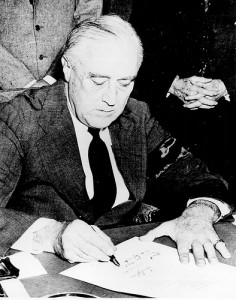
Medicine is a balancing act; how much of a drug is too much? A group of compounds called EETs provide a clear example of the possible dangers of giving patients too much of a good thing. (chris grabert/Flickr)
Usually when your doctor talks to you about lipids, he or she is talking about cholesterol (be it the good or bad kind). But cholesterol is only one kind of lipid. There are millions of these fatty molecules working in everyone’s body right now.
One family of lipids, known as EETs (or epoxyeicosatrienoic acids), is produced by the endothelial cells that line blood vessels, where they help control inflammation and the response to injury. Because EETs are also potent regulators of blood pressure, pharmaceutical companies are looking intently at compounds that raise bloodstream EET levels as a way of managing the cardiovascular aspects of more than 20 conditions, ranging from diabetes and stroke to kidney and eye diseases; some are currently in clinical trials.
There may be a catch, however: Some studies suggest that EETs promote angiogenesis, or blood vessel formation, and that the enzymes that process EETs have a relationship to cancer.
Dipak Panigrahy and Mark Kieran of Children’s Vascular Biology Program and the Dana-Farber/Children’s Hospital Cancer Center wanted to understand this relationship better: Could boosting EETs be dangerous? Full story »

Survivors of childhood cancers may walk around with treatment-related heart damage for decades without knowing it. Ming Hui Chen wants to help these survivors keep their hearts healthy. (qthomasbower/Flickr)
Our success at treating children with cancer has steadily improved in the 40 years since President Nixon announced the War on Cancer. At the time, 3 in 10 children survived a diagnosis of cancer; now upwards of 8 in 10 do. The U.S. alone is home to an estimated 328,000 childhood cancer survivors today.
But as these survivors age, they can experience late effects, long-term medical complications of the very treatments that saved their lives. In fact, 30 years out, survivors are at more risk of dying from treatment-related illness than from cancer recurrence.
Perhaps the most insidious late effect – and the leading cause of non-cancer death at the 30-year mark – is cardiovascular disease.
Treatment-related heart damage can take decades to appear. This long latency means that a woman treated for cancer at age 6 could face a heart attack when she’s 36. And she might never see it coming. “A survivor can walk around for years with minimal symptoms while their cardiovascular disease silently progresses,” says Ming Hui Chen, an adult cardiologist at Children’s Hospital Boston. Full story »

FDR (here signing the Declaration of War against Japan, 1941) died from a stroke caused by years of hypertension. Millions of U.S. children could meet the same fate - unless we act now.
While many of us recall that President Franklin Delano Roosevelt had polio, few remember that he died in 1945 from another cause: stroke. The sentiment of his physician — that it “had come out of the clear sky” — reflected the prevailing view that heart attack and stroke were bolts from the blue that doctors could act on only after the event.
But a few mavericks challenged this “salvage” paradigm, establishing the Framingham Heart Study in 1948 to identify predictors of cardiovascular events. One leading maverick, Dr. William Kannel, who passed away last month, coined the term “risk factors” to describe these predictors. Acting on the insight that controlling risk factors could prevent cardiovascular disease saved the lives of more than 150,000 Americans from heart disease alone between 1980 and 2000.
Judging by the surviving medical records, Roosevelt’s stroke may have been preventable with treatment for one such risk factor, hypertension. How different would the world have been had his persistent high blood pressure been treated?
The world is different now, not all for the better. High blood pressure has been attacking more and more children over the last 30 years, Full story »

Obesity among children is on the rise, but just telling them to out and get more exercise doesn’t work well. Tracy Curran hopes technology and counseling can help. (Photo: Wagner T. Cassimiro "Aranha"/Flickr)
[Ed. Note: This is the second in a series about Children’s Hospital Boston staff who received Patient Services Research Grants in 2011. This grant program engages the professional staff in the Department of Patient Services in high quality pediatric research with the ultimate goal of improving child health]
We all look at babies and fall in love with their chubby little legs and paunchy bellies. (When my younger son was a baby, a friend often jokingly threatened to “eat him like a marshmallow.”)
Cute as it is in babies, though, children can’t afford to have that cushioning as they get older. Obesity threatens the future health of a whole generation of children, putting them at risk for a host of long-term health problems like high blood pressure, type 2 diabetes (increasingly starting in childhood) and cardiovascular disease. This is on top of more immediate problems like sleep apnea, asthma, low self-esteem, depression, fatty liver disease (which can turn into cirrhosis) and joint pain. Full story »












